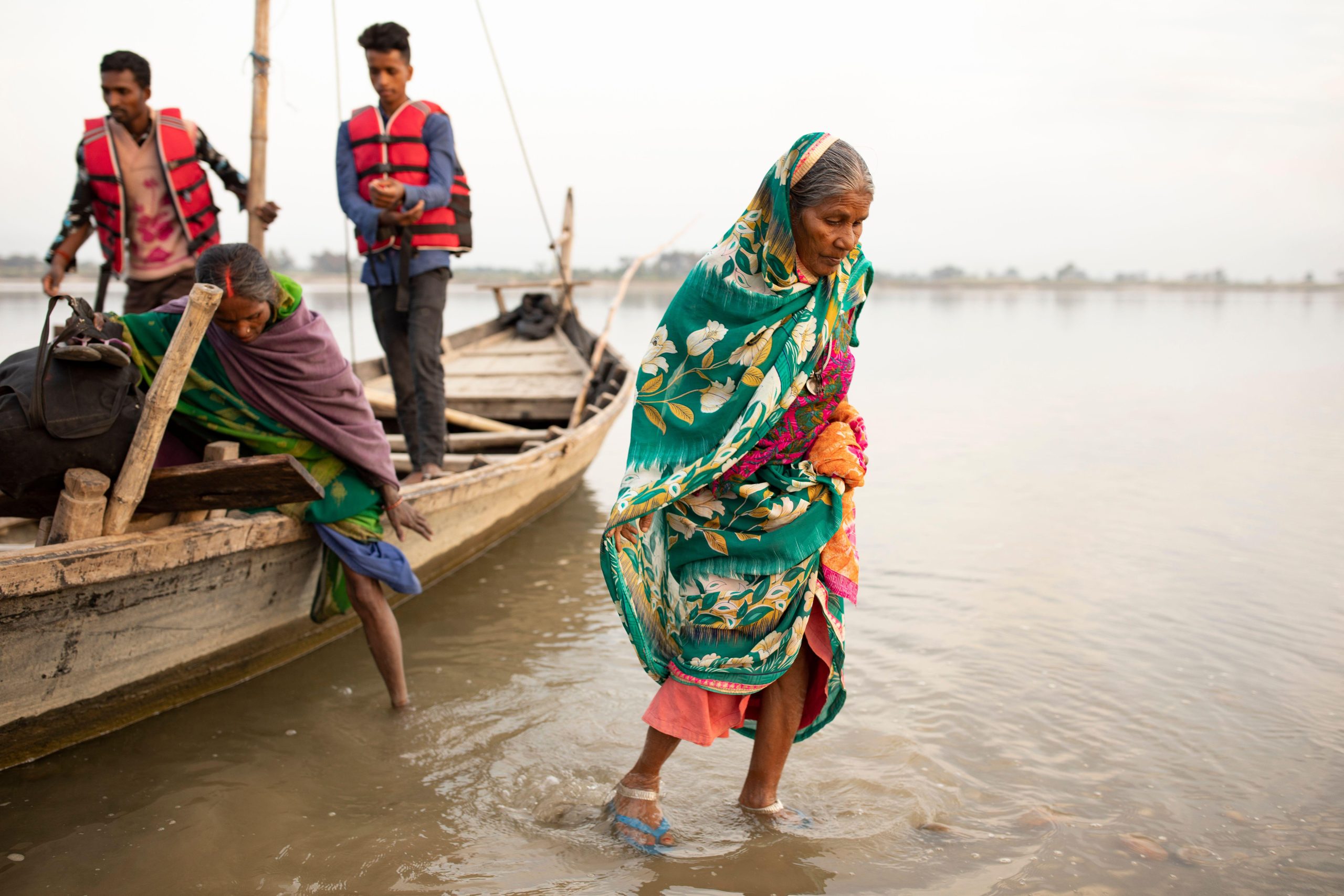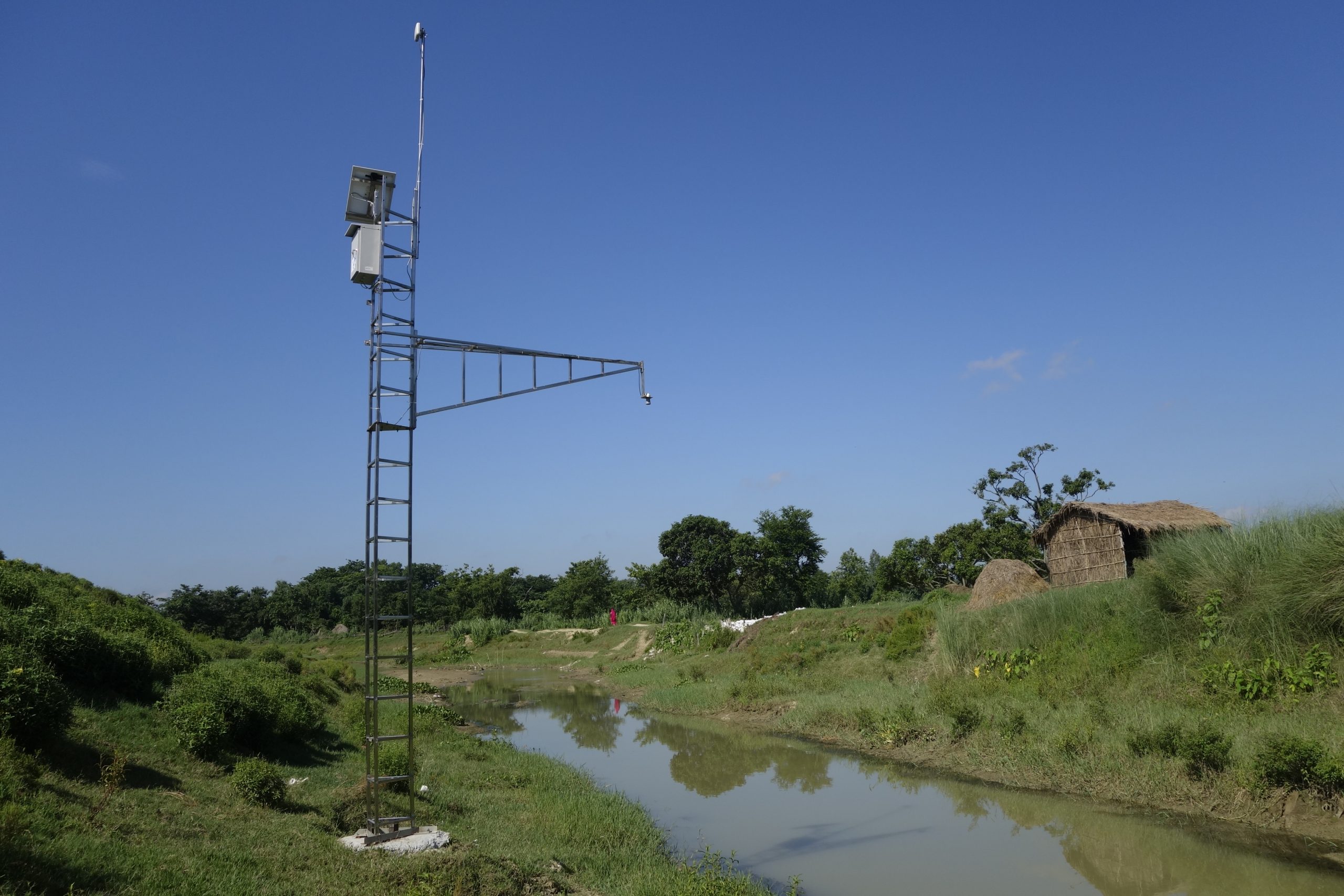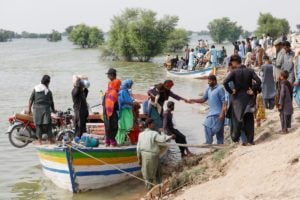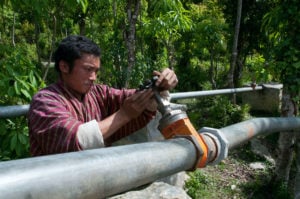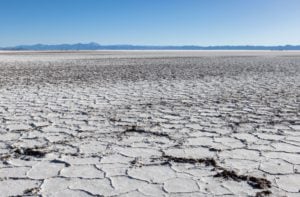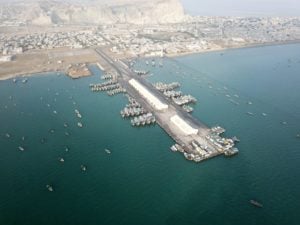Early in 2023, monsoon rains hit hard in Nepal’s Koshi Province. The cascading nature of the flood damaged hydropower infrastructure and took the lives of several hydropower workers. The increasing frequency and intensity of climate hazards, including heatwaves, droughts, floods, landslides, windstorms and Glacial Lake Outburst Floods make Nepal particularly vulnerable to climate change. Coupled with its diverse geography spanning from mountains to plains, interactions between these hazards result in compounding impacts on lives, livelihoods, assets, critical infrastructure and ecosystems.
An analysis of the Ministry of Home Affairs database reveals that from January 2000 to February 2022, there were approximately 29,310 climate-disaster events, which took the lives of 14,645 people, 28,092 livestock and caused the loss and damage of 800,000 buildings, including bridges, roads, hospitals, hydropower plants and schools. In addition, temperature increases are occurring faster than the global average, with studies indicating that warming could reach 1.2°C – 4.2°C by the 2080s.
Technology is becoming increasingly essential to address these growing risks and vulnerabilities in Nepal. In particular, Nepal’s early warning systems (EWS) have proven to be effective in reducing risks of hydro-meteorological hazards. Both physical science and citizen science have played a crucial role in making these early warning systems effective. Physical science generates information about flood risk and triggers warnings, while citizen science contributes to dissemination and communication of EWS messages.
However, it is crucial to recognise that countries in South Asia face shared threats of climate change. The devastating and historic 2022 floods in Pakistan, the Himachal-Uttarakhand floods in India in 2022 and 2023 and the Melamchi and Mahakali floods in Nepal in 2021 highlight some common challenges that require similar solutions.
Can technology help reduce climate risk?
During COP27, UN General Secretary Mr. António Guterres announced Early Warning for All (EWS4ALL) and emphasised the importance of this technology in reducing climate-induced losses and damages again at COP28. The World Meteorological Organisation has highlighted that effective EWS can save lives and reduce damage by 30% if activated 24 hours before the event. This means that if meteorological authorities in South Asia can provide early warnings, it could be instrumental in reducing losses and damages in the region every year.
Nepal’s flood early warning system, India’s impact-based forecasting system and Bangladesh’s cyclone warning system are successful examples of EWS in the region. The Indian Meteorological Department issues an impact-based forecasting bulletin every day for cyclones, floods, heat and cold waves. In 2022, Nepal’s Department of Hydrology and Meteorology sent 13 million SMS alerts to risk-exposed communities, compared to 3.5 million alerts in 2019. These SMS alert systems are becoming lifesaving instruments for flood-affected communities in Nepal. However, climate hazards do not respect national boundaries, and collaboration across boundaries is essential to ensure safety and security of flood-affected communities in South Asia.
For instance, flood-affected downstream communities in the Indian states of Bihar and Uttar Pradesh cannot reap the benefits of Nepal’s SMS alert system, despite these communities facing the same climate hazard as across the border. This is because the SMS alerts are sent through Nepali telephone service providers. Similarly, Nepali communities living in the exposed region of Bhotekoshi do not get early warning information from China, despite a large part of the Bhotekoshi watershed running through the Tibet region of China. Nepalis living by the Indian-origin Mahakali River, which flows along the India-Nepal border also do not get alerts from India when repair and maintenance work takes place on Indian hydropower projects that could potentially affect Nepali access to water. These challenges are giving rise to discussions on the vitality of transboundary data sharing in the region.
Government-to-government collaboration could solve these transboundary data sharing issues and save the lives of millions of people living in downstream river regions in India, Nepal, and China. Real-time data sharing across borders can help improve anticipatory action for floods, droughts and other hydro-meteorological hazards. South Asian countries could also build synergy in their National Adaptation Plans. While these plans propose several solutions, South Asian countries are struggling to find appropriate technology and financing for effective implementation. Sharing best practices on drought-resistant crops, water management techniques, nature-based solutions and climate-resilient infrastructure would allow these neighbouring countries to learn from each other’s successes and failures.
Joint initiatives between South Asian countries on climate resilience and technology development can attract greater international investment and foster regional innovation hubs for climate solutions. Such collaboration would promote knowledge exchange and foster South Asian solutions to South Asian problems. The South Asian Association for Regional Cooperation (SAARC) can be a platform to bring both physical science and citizen science together through diplomacy.
By bringing regional governments as well as civil society networks from across borders to the table, organisations such as Global Network of Civil Society Organisation for Disaster Reduction and Duryog Nivaran can work to disseminate information at the grassroots level across borders and across communities.
Challenges to collective action in South Asia
Two key obstacles stand in the way of South Asia working as one to combat climate change, mainly through technology. The first is political. Border disputes between India, Pakistan, China and Nepal, security and legacy issues, China’s increasing influence in the region’s smaller states and domestic political and economic instability hinder coordinated action. Second, the lack of standardised data sharing mechanisms across countries makes cross-border information sharing, response mechanisms and innovation challenging.
Similar to other South Asian countries, about 30 percent of Nepal’s population lives in rural, remote areas that lack basic facilities such as telephone and internet access, as well as reliable electricity. This makes it difficult to access information, operate climate services, use climate monitoring tools and access innovation and modern technologies that urban populations enjoy. Furthermore, building and maintaining weather stations, sensor networks and data centres in high mountain areas requires significant infrastructure investment. Nepal’s mountainous terrain and scattered settlements can make this expensive and challenging. Additionally, hundreds of local languages are spoken across Nepal. The current SMS alerts are only in Nepali, which in many cases is difficult for several communities to understand. Notably, other South Asian countries, like India and Pakistan face challenges similar to those faced by Nepal due to similar economies, geography and cultural and linguistic diversity.
The Way Forward
Despite these challenges, Nepal has gradually been making strides in improving its EWS. It has prepared a National Adaptation Plan and created several policies and strategies that address disaster risk reduction and management. Initiatives like community radio programmes and accessible mobile phone apps are bridging information gaps in Nepal, as well as in South Asia as a whole. Government efforts are also underway to expand internet access and promote technical literacy to rural areas.
Strengthening regional cooperation and trust-building would alleviate climate distress, poverty and social disparity and strengthen technological innovation in the region. South Asian countries can develop standard data-sharing procedures and platforms among all SAARC countries to address the transboundary data gaps for the region. There are several weather radars in India that could be expanded to cover affected regions within Nepal. The 155-mile radius weather radar in Uttarakhand, Uttar Pradesh and Bihar could also cover the weather system of the entirety of Nepal if transboundary data-sharing mechanisms were established by respective governments. By addressing these challenges, South Asia can unlock the immense potential of transboundary technology and information sharing, enhancing regional resilience and building a more secure future in the face of climate change.
This article has been co-published by South Asian Voices (Stimson Center) and The Third Pole
